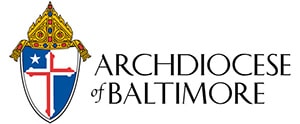
Several members of The Catholic Review are attending the annual Catholic Media Convention in Pittsburgh. Pictured are Nina Schuler Heckman (sales manager), George P. Matysek Jr. (senior writer) and Christopher Gunty (editor/associate publisher). (CR photo)
PITTSBURGH – A big chunk of the talk at the Catholic Media Convention here in the Steel City seems to be swirling around the state of print publications and the growing influence of new media.
During a general session yesterday, Amy Mitchell, deputy director for the Pew Research Institute’s Project for Excellence in Journalism, pointed out some eye-opening trends uncovered in a 2010 Pew study:
* For the first time, online news consumption surpassed print consumption. 46 percent of people surveyed said they read their news online regularly, while 40 percent said they read it in print. Local TV news was the most popular platform, with 50 percent of people surveyed citing it as their source for news.
* Digital platforms are becoming the preferred choice for reading news. The web continues to gain ground, while other sectors are losing. In 2009-10, the web saw a 17.1 percent growth in audience, while traditional platforms lost audience share (cable TV, -13.7; magazines, -8.9; audio, -6; newspapers, -5; network TV, -3.4 and local TV, -1.5).
* Facebook is becoming a major force in directing users to news stories. It is now among the top-10 sites that send people to news sources.
* 47 percent of Americans are getting their local news on a mobile device.
* $1.6 billion was lost in print news budgets from 2006-2010.
Like all print products, Catholic publications are feeling the crunch. Advertising revenue and circulation have fallen – putting tremendous pressure on newspapers as they attempt to continue serving their readers in ink while also offering a vigorous – and critically necessary – digital presence.
Some newspapers – including The Catholic Review – have initiated strategic planning programs to come up with the best ways of remaining viable in an ever-changing age.
It’s clear that Catholic journalism is essential these days.
“There’s been a loss of institutional memory and beat reporting,” said Mitchell, noting that with downsizing, many secular newspapers no longer cover religion as closely as they did in the past. “It’s harder for these topics to get attention.”
More than ever, Catholic journalists can fill the void.

